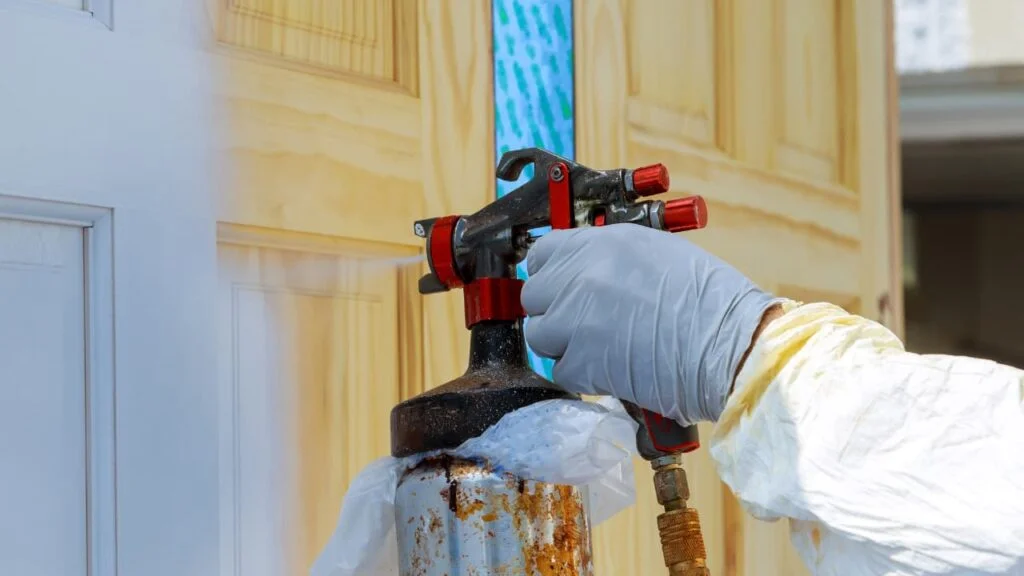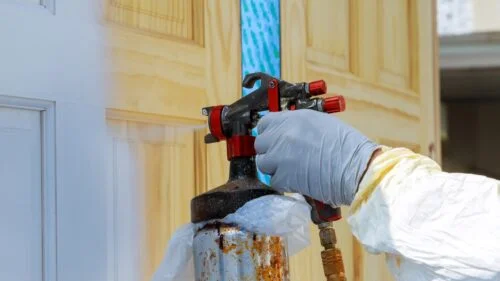When it comes to spraying, finding the ideal distance can be crucial for achieving great results. Whether you’re painting a room, applying pesticides to your garden, or simply refreshing the look of your furniture, knowing the proper spraying distance can make all the difference. In this article, we’ll explore the importance of finding the right balance between being too close and too far, and how it can affect the effectiveness and evenness of your spray application. So, let’s uncover the secrets behind the ideal spraying distance and learn how to achieve professional-looking results effortlessly.
What’s The Ideal Spraying Distance?
Table of Contents
Factors to Consider
Type of Spray
When determining the ideal spraying distance, it is important to consider the type of spray being used. Whether it is an herbicide, insecticide, paint, or disinfectant, different products require different spraying distances. This is because the density, viscosity, and size of droplets can vary significantly between sprays. Understanding the specific characteristics of the spray will help determine the optimal distance for effective application.
Target Surface
The target surface also plays a crucial role in determining the ideal spraying distance. Whether you are spraying crops, landscaping, or a surface to be painted, the distance needed will depend on the size and texture of the area. A larger surface may require a farther spraying distance to ensure even coverage, while a smaller and more delicate surface might necessitate a closer distance to avoid overspray or damage.
Weather Conditions
Another factor that cannot be overlooked when determining the ideal spraying distance is the prevailing weather conditions. Wind speed and direction are of utmost importance as they can greatly affect the spray drift. Spraying in windy conditions can result in the spray being carried away from the target surface and potentially causing harm to nearby plants, animals, or even people. Therefore, it is crucial to consider weather conditions and adjust the spraying distance accordingly for safe and effective application.
Sprayer Equipment
The type and capabilities of the sprayer equipment being used also impact the ideal spraying distance. Different sprayer designs and nozzle configurations can affect the spray pattern and droplet size, ultimately influencing the distance at which the spray should be applied. It is important to ensure that the equipment being used is appropriate for the type of spray and the desired coverage area. Understanding the capabilities of the sprayer equipment will help determine the optimal distance for achieving the desired results.
Safety Requirements
Spraying substances, especially those containing chemicals, comes with inherent risks. It is essential to consider safety requirements when determining the ideal spraying distance. Maintaining a safe distance not only protects the applicator from potential exposure but also prevents unintended bystanders from coming into contact with harmful substances. It is crucial to adhere to safety guidelines and regulations to ensure the well-being of everyone involved. Always wear appropriate personal protective equipment and follow the instructions provided by the manufacturer and relevant authorities.

Recommended Spraying Distances
Agricultural Spraying
In agricultural spraying, the ideal spraying distance can vary depending on the type of crop and spraying method employed. Generally, a distance of 18 to 24 inches from the target surface is recommended. This allows for adequate coverage without causing damage to the plants. However, it is important to thoroughly read and follow the product label instructions for specific guidance tailored to the crop and spray being used.
Gardening and Landscaping
When it comes to gardening and landscaping, the spraying distance may vary depending on the type of plants and the desired outcome. For larger plants or outdoor surfaces, a distance of 12 to 18 inches is often recommended. This ensures a sufficient spread of the spray while minimizing the risk of overspray. For smaller or more delicate plants, it may be necessary to reduce the spraying distance to 6 to 12 inches to avoid damage and promote more precise application.
Pest Control
When using sprays for pest control purposes, such as insecticides or herbicides, it is important to consider both the target pests and the surrounding environment. The ideal spraying distance can range from 12 to 24 inches, depending on the nature of the pests and the desired coverage area. For targeted applications, a closer distance may be necessary, while larger areas may require a wider coverage distance. Always refer to the product label for specific instructions and guidelines.
Painting and Coating
In the realm of painting and coating, the ideal spraying distance will depend on the type of surface, the paint or coating being used, and the desired finish. As a general guideline, a distance of 10 to 12 inches is recommended for most painting applications. However, certain factors such as the paint viscosity and sprayer pressure may require adjustments to the spraying distance. It is crucial to experiment and test the spraying distance on a small area before tackling the entire surface.

Upgrade Your Painting Game
Explore our Introduction To The Best Paint Sprayers guide to take your projects to the next level!
Disinfection and Sanitation
In disinfection and sanitation applications, the ideal spraying distance is crucial for ensuring effective coverage. Whether disinfecting surfaces or sanitizing equipment, a distance of 12 to 18 inches is often recommended to achieve thorough coverage while minimizing wastage. However, it is important to consider the specific disinfectant or sanitizer being used, as some may have different recommendations based on their formulation and intended use. Always refer to the product label and guidelines for the best results.
Adjusting Spraying Distance
Testing and Calibration
To determine the ideal spraying distance, it is recommended to conduct testing and calibration before starting the actual application. Set up a controlled environment that closely resembles the target surface and use sample sprays to determine the coverage and effects at different distances. This allows for adjustments to be made and ensures that the spraying distance chosen is suitable for the specific application.
Monitoring and Adjustments
Even after determining the ideal spraying distance, it is important to monitor the application process and make necessary adjustments as needed. Factors such as wind speed, surface texture, and spray formulation can influence the effectiveness of the spraying distance. Continuously observe the results and make real-time adjustments to ensure optimal coverage, minimize wastage, and maintain safety.
The Importance of Ideal Spraying Distance
Efficiency and Coverage
Using the ideal spraying distance ensures maximum efficiency and coverage. Applying the spray from the correct distance allows for better dispersion and distribution of the product, minimizing the chances of over- or under-application. This leads to a more effective use of the spray, resulting in improved results and cost savings. By achieving the desired coverage with minimal waste, the ideal spraying distance optimizes the overall efficiency of the application process.
Environmental Impact
The ideal spraying distance also plays a vital role in reducing the environmental impact of the application. Using a distance that is too far may result in excessive overspray, which can potentially contaminate surrounding areas, water bodies, or non-target plants. On the other hand, spraying from too close can lead to excessive product buildup, increasing the risk of runoff and leaching into the environment. By carefully selecting and adhering to the ideal spraying distance, we can minimize the ecological impact of the application and promote sustainable practices.
Health and Safety
Ensuring the ideal spraying distance is not only important for environmental impact but also for health and safety reasons. By maintaining a suitable distance, we reduce the risk of accidental exposure to harmful substances. Inhalation, skin contact, or ingestion of sprays can have severe consequences for human health. Following recommended spraying distances helps protect applicators, bystanders, and the general public from potential harm. It is essential to prioritize safety and always abide by the necessary precautions and guidelines.
In conclusion, determining the ideal spraying distance involves considering various factors such as the type of spray, target surface, weather conditions, sprayer equipment, and safety requirements. Recommended spraying distances vary depending on the specific application, whether it is agricultural spraying, gardening and landscaping, pest control, painting and coating, or disinfection and sanitation.
Through testing, calibration, and monitoring, we can establish the most effective distance for the desired coverage. Adhering to the ideal spraying distance not only improves efficiency and coverage but also minimizes the environmental impact and ensures the health and safety of all involved.


